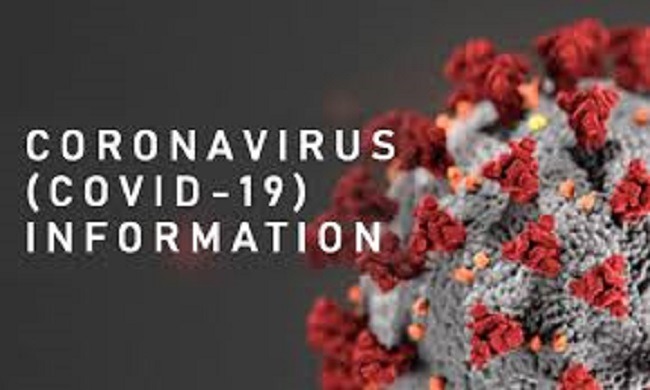CORONAVIRUS SYMPTOMS: 8 INDICATORS YOU MAY NOT KNOW ABOUT
As new data pours in from different research centers, federal, state and international medical agencies, we gain vital insights into how the COVID19 virus behaves and how it affects the human body.
In this publication we intend to bring you up to speed with the latest information as regards how the virus affects us humans and new signs you may have to look for. Also we would look at all the other symptoms and discuss what specifics you would need to identify before you pick up your phone to call your health provider.
It is also vital to note that at the moment, tests can only be carried out with symptomatic patients. This is due to a resource problem as there are not enough test kits to go around. It is also of immense importance to state again that there is no known cure for this particular strain of the coronavirus. However, vaccines and treatments are being developed and set to move to clinical trials a week from the date of this publication.
As earlier mentioned, the analysis of new data has brought to light some new information that is absolutely vital to you and your loved ones!
8 VITAL INDICATORS AND WHAT TO DO IF DISCOVERED
- DRY COUGH: Coughing is a very common symptom of the Coronavirus but it’s not just any cough, its dry cough. It is not just a mild irritation in your throat or the kind of cough you get when you choke on water, this kind of cough is serious and is felt within your chest. According to CNN, a report from WHO in February indicated that 33% 55,924 people with laboratory confirmed cases of Covid-19 had coughed up sputum, a thick mucus sometimes called phlegm, from their lungs.
- SHORTNESS OF BREATH: This indicator does not appear early but it is one of the most serious ones. This can develop without the onset of cough. You will start to fill tightness in your chest and you will find it difficult to fill your lungs with air. This is a time t act fast according to experts.
- FEVER: Another very common indicator, fever is rather in some cases misunderstood. The average core temperature of humans is about 98.6 degrees Fahrenheit (37 degrees Celsius) but how ever individual core temperature differs. It is for this reason that experts advice not to fixate on an number. Most children and adults will not be considered feverish until their temperature reaches 100 degrees Fahrenheit (37.7 degrees Celsius).
Infectious disease expert Dr. Williams Schaffner, a professor of preventive medicine and infectious disease at Vanderbilt University of Medicine in Nashville, told CNN that “one of the most common presentations of fever is that your temperature goes up in the late afternoon and early evening. It’s a common way virus produce fever.”
- PROFOUND LOSS OF SMELL:New data suggests that the loss of smell and maybe even taste is gradually becoming an early sign that someone might be infected.”Based on our study, if you have smell and taste loss, you are more than 10 times more likely to have COVID-19 infection than other causes of infection,” Dr. Carol Yan who is an otolaryngologist and head and neck surgeon at the University of California, San Diego Health, USA, said in a statement.
- DIGESTIVE PROBLEMS: In China, a study showed that digestive and stomach (gastrointestinal) symptoms was seen in about half of the 200 patients that were observed. This symptoms was found in a unique subset of people who had digestive problems as earlier signs of infection.
- CONJUCTIVITIS: Data coming out of Asia shows that 1-3% COVID19 patients also had conjunctivitis. This highly contagious condition is an inflammation of a thin layer called conjunctiva that covers the white part of the eye and the inside of the eyelid. The virus that causes COVID19 is one of such virus that can cause this condition. Still, this condition can be only be worry some if you have other tell tell signs like coughing or shortness of breath.
- FATIGUE: The WHO report shows that out of 6,000 laboratory confirmed cases, 40% experienced extreme fatigue. This can be an early sign for some people. Fatigue may continue long after the virus is gone as Anecdotal reports from people who have recovered from Covid-19 say lack of energy and exhaustion lingers well after the standard recovery period of a few weeks.
- SORETHROAT, HEADACHE AND NASAL CONGESTION: While only a handful of people experience this condition, it is worthy to note that it bears similarity with the common cold or influenza. A report from the World Health Organization shows that nearly 14% of the almost 6,000 cases of Covid-19 in China having symptoms of headache and sore throat, while almost 5% had nasal congestion.
SO WHAT SHOULD YOU DO?
According to WHO and NCDC, if you develop symptoms similar to the common cold or influenza, stay at home (preferably in a different room to minimize risk of infecting family members). Try to manage the situation by treating symptomatically, taking a lot of fluids, resting and fever-reducing medications. If there is no improvement, place a call to your health care provider or the NCDC HOTLINE.
This does not apply to people above 60 or with underlying medical conditions. If you’re having concerns about coronavirus, reach out to your health care provider immediately.
It is still unsure whether pregnant women are at higher risk (you can see why here) but caution is highly advised. If any symptoms develop, kindly reach out to your health provider.
Lastly, does with underlying medical conditions, regardless of age should reach out to their health provider immediately you start developing symptoms.
It’s important that we take necessary precautions in other to safeguard our families and those we love. Stay safe and stay home.

